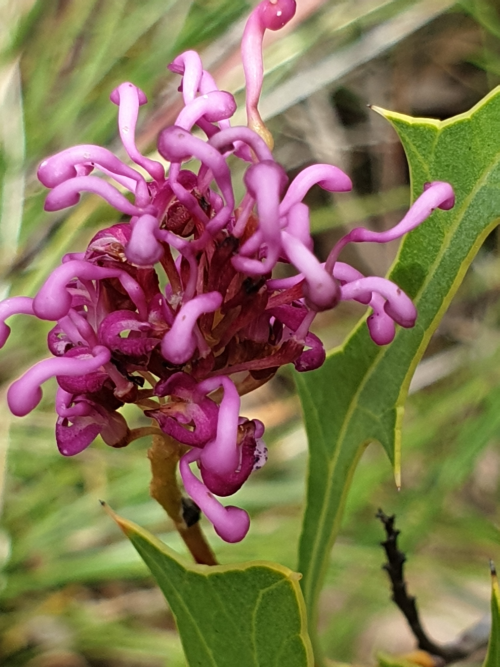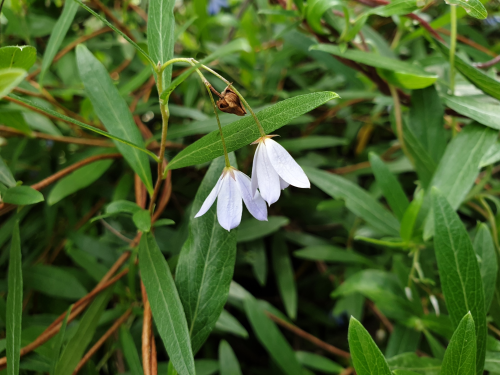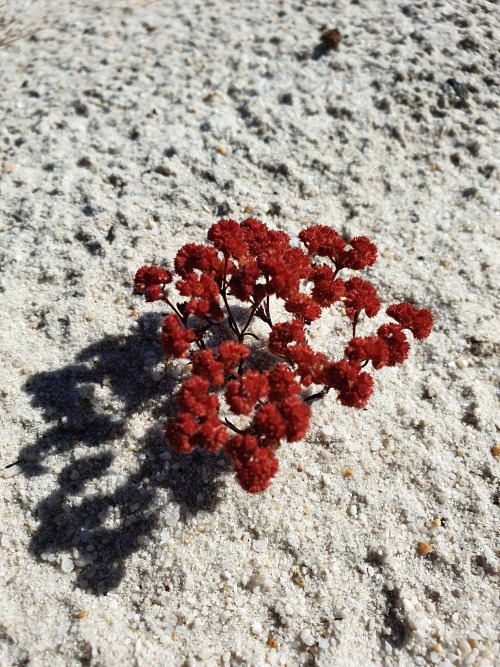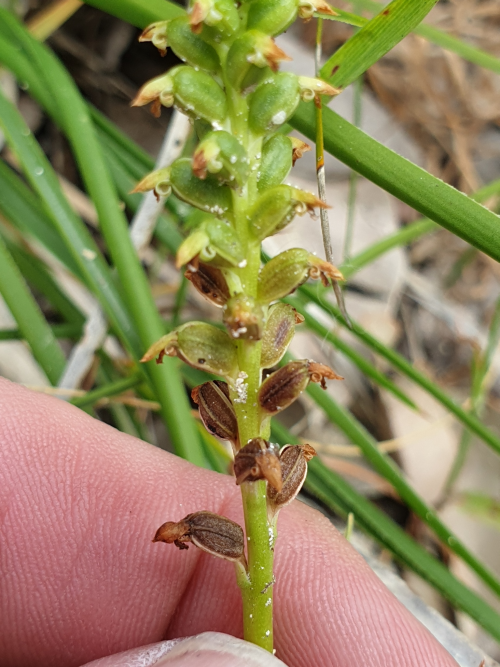#1777-1781 - More Plants
#1777 - Grevillea quercifolia - Oak-leaf Grevillea


Synonyms include Grevillea brachyantha, glaucina, lactucifolia, quercifolia var. angustifolia and Hakea quercifolia.
Another SW endemic. Named after the shape of the leaves, which do indeed resemble the leaves of the spikier oaks, but more closely resemble holly - but Grevillea ilicifolia was already a thing. The genus is named after Charles Francis Greville, a British antiquarian, collector and politician who sat in the House of Commons from 1774 to 1790. He was a very close friend of the botantist Sir Joseph Banks and both attended the organizing meeting in March 1804 of the precursor to the Royal Horticultural Society, the Society for the Improvement of Horticulture.
A straggly to sprawling, lignotuberous shrub, 70cm high. Flowers may be pink, red, or purple, and appear from July to December. Grows in sand, loam, often with gravel, and laterite. This one was at Ambergate Reserve.
#1778 - Billardiera heterophylla - Bluebell Creeper


Formerly Sollya heterophylla. Named after Jacques-Julien Houton de Labillardière, a French botanist, and heterophylla (having leaves of more than one shape). It was previously named after Richard H. Solly, an English plant physiologist and anatomist.
A twining shrub in the Pittosporaceae, native to Western Australia, but now grown as an ornamental plant in appropriate climates worldwide. Seeds were available in Jamiaca as early as the 1880s, for example. It has escaped cultivation in other Australian states, and overseas, and is doing well enough that it’s sometimes considered a weed. It’s banned in South Australia, for example.
In the wild it can form thick bushes up to a meter in height, and the flowers may be white, deep blue, or even pink. It easily colonises disturbed ground, which has no doubt helped it become such a successful weed.
#1779 - Mesomelaena tetragona - Semaphore Sedge

From the Greek words mesos and melaino, meaning , meaning “middle, to turn black” , referring to the dark involucral bracts. Tetragona is also Greek, meaning with ‘four equal angles, square’. That and the common name probably refer to the broad angle where the stem split at the flowers. All 5 species in the genus are WA endemics.

Flowering in every month but December. It grows in woodland in white, brown, grey, or lateritic sand, loam, sandy clay, and gravel, from Geraldton to Cape Arid, and unlike more familar sedges doesn’t need to be near water.
#1780 - Crassula sp. - Stonecrop



AKA Pygmyweeds.
Crassulas were first described by Linnaeus, with the name deriving from the Latin for ‘thick’ refering to the succulent leaves. Australia does have native Crassula, but this one, growing in an empty lot in Busselton, is probably an introduced weed species.
Quite a few Crassulas, including the Jade Plant Crassula ovata, are popular garden plants, growing to their attractively arranged and shaped foliage. Most species in the family Crassulaceae grow in arid or semi-arid areas, with few larger than a shrub, and even fewer aquatic species, but they do have the distinction of using a unusual photosynthetic pathway - Crassulacean acid metabolism, which is an adaptation to drought.
#1781 - Microtis media - Common Mignonette Orchid


Microtis is derived from the Greek words mikros and ous meaning “small ear”, referring to small, ear-like appendages on the column. media refers to the size, also it can actually be up to 60cm tall and has another common name - Tall Mignonette Orchid. All of them have long tubular leaves, hence the ‘onion’ and ‘mignonette’ part of the common name for the genus.
An onion orchid species from the Yallingup trip that I managed to miss, earlier. It grows in shrubland and woodland, often in seasonally wet areas and on granite outcrops. Endemic to the southwest of Western Australia between Shark Bay and Eyre.
Mignonette and Onion Ochids are widespread in Australia, with the exception of the Northern Territory, but are also found in parts of Asia, New Zealand, and various Pacific Islands. They’re pollinated by small Ichneumonid and Braconid wasps, and also by a range of ant species - which is unusual, since ant saliva kills most pollen. If the flowers fail to be pollinated, they can self-fertilize - in at least some species, the stigma will actually grow until it reaches the pollinia.